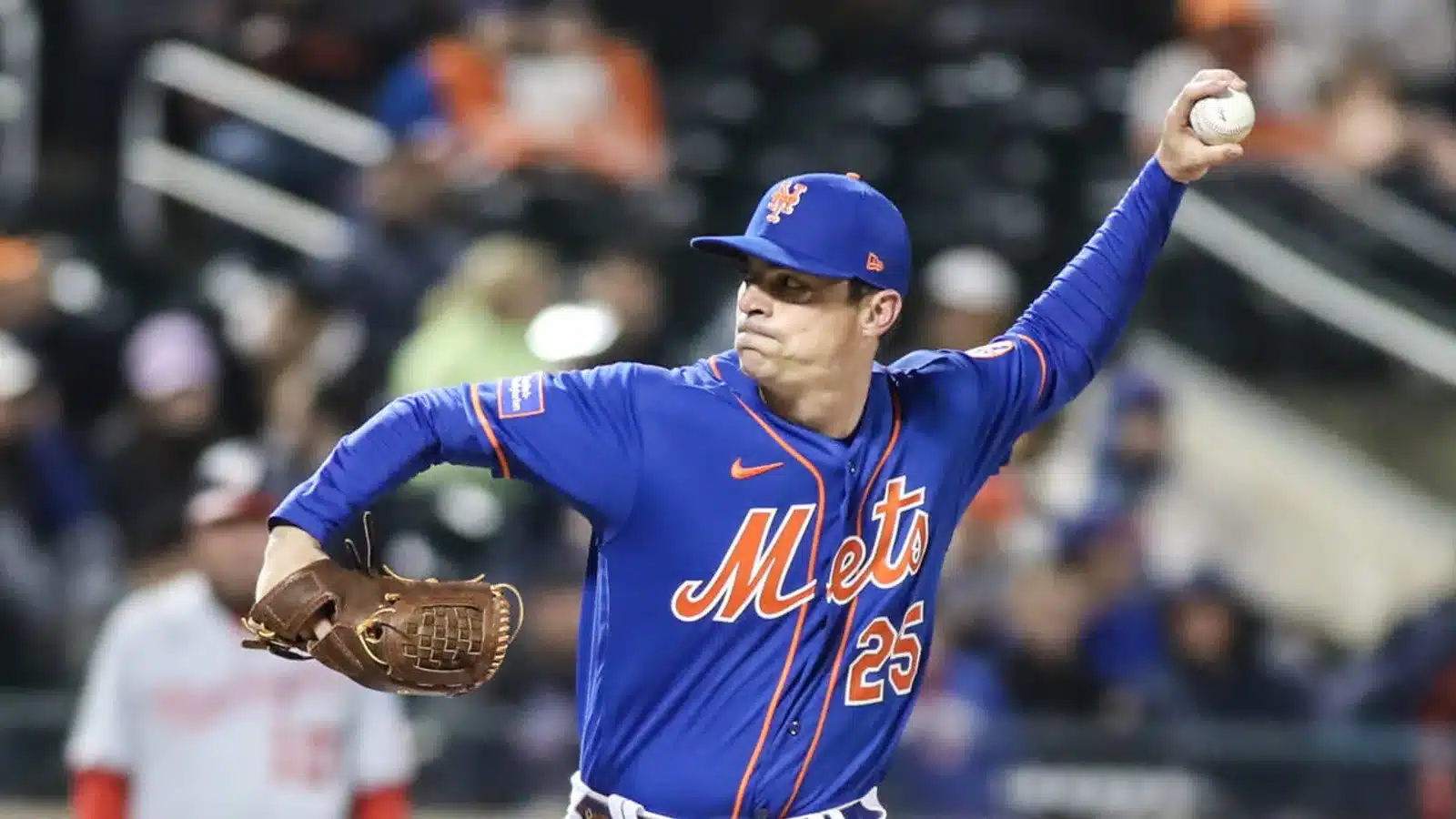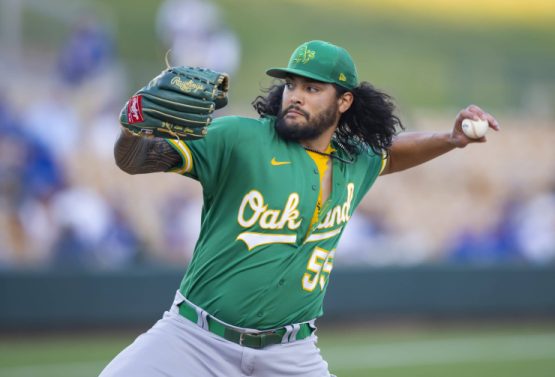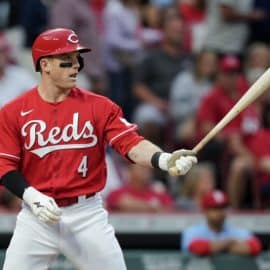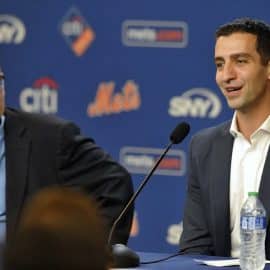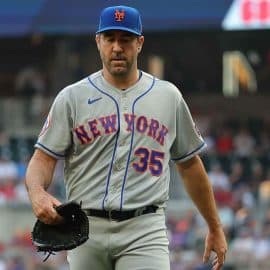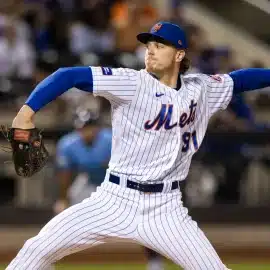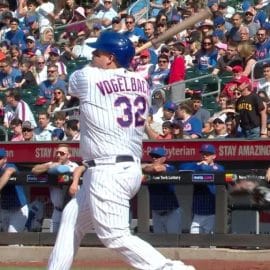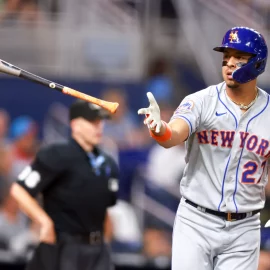Now that the 2023 season is over for the New York Mets, we will spend the next several weeks taking a look at the big picture. This deep dive will be broken down into phases every weekday, continuing today with a look at the Mets’ bullpen.
The 2022 bullpen proved to be a strength for the New York Mets as the unit was deep and saw a historic performance from closer Edwin Diaz. It was hard to expect a repeat performance from the unit given some key free agent defections, but few expected the Mets to not get even one pitch out of Diaz after he tore his patella tendon celebrating a save for Puerto Rico in the World Baseball Classic.
That injury, along with now-former GM Billy Eppler’s decision not to build out the depth of the unit in favor of optionable relievers, left the Mets’ bullpen lacking throughout the year and played a big role in the unit’s struggles throughout the season. As we did a year ago, we’ll grade the individual relievers who made at least 10 appearances throughout the course of the season to see what we can learn for next season.
Season In Review: Bullpen
Brooks Raley
The Mets acquired Raley from the Tampa Bay Rays to be their new lefty specialist and he was their most effective reliever who was with them for the whole season, pitching to a 2.80 ERA and racking up 25 holds in 66 appearances. Raley struck out 61 batters in 51.2 innings pitched and showed he could function as a closer by racking up three saves. The Mets hold a club option on Raley for next season they will likely exercise.
Grade: A
Adam Ottavino
One of two primary holdovers from last year’s bullpen after Diaz got hurt, Ottavino started the year as the primary setup man and eventually became the de facto closer after the trade deadline. The results weren’t as brilliant as they were in 2022, when Ottavino had an ERA around two, but he still was effective with a 3.21 ERA in 66 appearances. Ottavino struck out 62 batters in 61.2 innings pitched and recorded 12 saves, ranking him second on the team for the season behind David Robertson. The Mets gave Ottavino a two-year deal last winter but the second year is a player option, which Ottavino has been non-committal about exercising. It’s hard to imagine the market will get more than a $7 million dollar commitment for Ottavino, which is what he would earn in New York next year, so he will likely return as well.
Grade: A-
Drew Smith
Eppler clearly expected a big leap forward from Drew Smith, who was the other holdover from the 2023 bullpen, but he had a very inconsistent year. A 10-game suspension for sticky substances in June slowed the momentum for Smith, who had been pitching well to that point, and he went 4-6 with a 4.15 ERA and 1.40 WHIP in 63 appearances. Smith is arbitration eligible for next season and there is a chance the Mets non-tender him if they feel they can upgrade on his roster spot.
Grade: C
David Robertson
Initially signed as the eighth-inning man, Robertson seamlessly stepped into the closer’s chair after Diaz went down in March. Robertson was a lockdown closer, picking up 14 saves and pitching to a 2.05 ERA and 1.00 WHIP in 40 appearances, racking up 48 strikeouts in 44.1 innings pitched. The Mets traded Robertson at the trade deadline to the Miami Marlins for prospects Marco Vargas and Ronald Hernandez, a move that appeared to work out in their favor after Robertson struggled in his move to Miami and lost the closer’s chair. Robertson did indicate he liked his time in New York so it’s possible the two sides could explore a reunion this winter.
Grade: A+
Jeff Brigham
The Mets traded for Brigham last winter to add another middle relief option to their bullpen and he quickly established himself as one of Buck Showalter’s most trusted relievers. Everything came crashing down for Brigham in Philadelphia on June 24, when he imploded in the eighth inning of the Mets’ worst loss of the year and was never really the same after that. Brigham, who was 1-3 with a 5.26 ERA in 37 appearances, is arbitration eligible this winter and could be a non-tender candidate if the Mets feel they can upgrade on his 40-man roster spot.
Grade: C-
Trevor Gott
The Mets traded for Gott in July, essentially eating the remaining salary of Chris Flexen to get themselves a reliever with another year of team control. Gott struggled upon his arrival in New York but improved down the stretch, finishing his first season as a Met with a 4.34 ERA in 34 appearances. Like Brigham and Smith, Gott is arbitration eligible this winter.
Grade: C
Dominic Leone
The Mets signed Dominic Leone as a free agent in May after he opted out of a minor league deal and he was mostly a middle reliever for the Mets. Showalter tried trusting him with some late inning responsibilities and that didn’t go too well, but he pitched well enough to convince the Los Angeles Angels to trade for him at the deadline. The Mets got back minor league infielder Jeremiah Jackson for Leone, who went 1-3 with a 4.40 ERA in 31 appearances, so this move could pay some long-term benefits for the franchise.
Grade: C
Grant Hartwig
Hartwig is a rare player development success story for the Mets, who signed him as an undrafted free agent in 2021 and watched him work his way to the majors this season. The Mets appeared to catch lightning in a bottle with Hartwig, who succeeded Stephen Nogosek as Buck Showalter’s preferred multi-inning reliever, but he became less effective as the year went on. Hartwig finished his first season as a big-leaguer with a 5-2 record and a 4.84 ERA in 28 appearances and should be a depth option for the team next season.
Grade: C-
Phil Bickford
Needing bullpen arms to complete the season, the Mets acquired Bickford and Adam Kolarek in a deal with the Los Angeles Dodgers for cash considerations. Bickford did decently as a Met, going 3-2 with a 4.62 ERA in 25 appearances after the trade, and presents an interesting conundrum for the front office as he has four years of team control left but is out of minor league options.
Grade: C
John Curtiss
The Mets’ two-year investment in Curtiss saw him be a sporadic contributor at the big league level, making 15 appearances where he pitched to a 4.58 ERA and occasionally flash the strong form that made him a key set-up reliever in Miami before undergoing Tommy John surgery. Curtiss finished the year on the injured list after undergoing surgery to remove a floating body in his elbow and is arbitration eligible this winter, which could make him a non-tender candidate.
Grade: C
Tommy Hunter
Showalter’s connection with Tommy Hunter brought him back to the Mets on a minor league deal and he made the club out of spring training. The Mets used Hunter as a long man but saw his effectiveness wane as he battled back issues throughout the year. Hunter was released in the middle of the year after pitching to a 6.85 ERA in 14 appearances and opted to retire at that point.
Grade: D
Josh Walker
Like Hartwig, Walker is a player development success story for the Mets, who drafted him in the 37th round back in 2017. A strong start to the year at AAA Syracuse earned Walker a shot in the big league bullpen by June, where he started out strong but struggled as the league got a look at him. Walker pitched to an ERA of 8.10 in 14 appearances and finished the season on the injured list with an oblique strain, but he is still under team control with options so he could factor into the team’s 2024 plans.
Grade: F
Stephen Nogosek
The Mets brought Nogosek north after camp as a long man and he did decently in that role, soaking up 25.2 innings in 13 appearances and pitching to a 5.61 ERA. When the bullpen was getting gassed in the middle of the year, the Mets waived Nogosek to add fresh arms to the unit and tried to outright him to AAA Syracuse. Nogosek refused the assignment and became a free-agent, signing a minor league deal with the Arizona Diamondbacks in mid-June.
Grade: D
Sam Coonrod
Coonrod was a sleeper option for the bullpen in spring training after the Mets claimed him off waivers but a high-grade lat strain knocked him out until mid-August. By the time Coonrod returned the Mets were out of it and he didn’t pitch very well, working to an ERA of 9.45 in 10 appearances. Coonrod is arbitration eligible and could find himself non-tendered if the new regime doesn’t find him to be an appealing bullpen option.
Grade: F
Add The Sports Daily to your Google News Feed!
